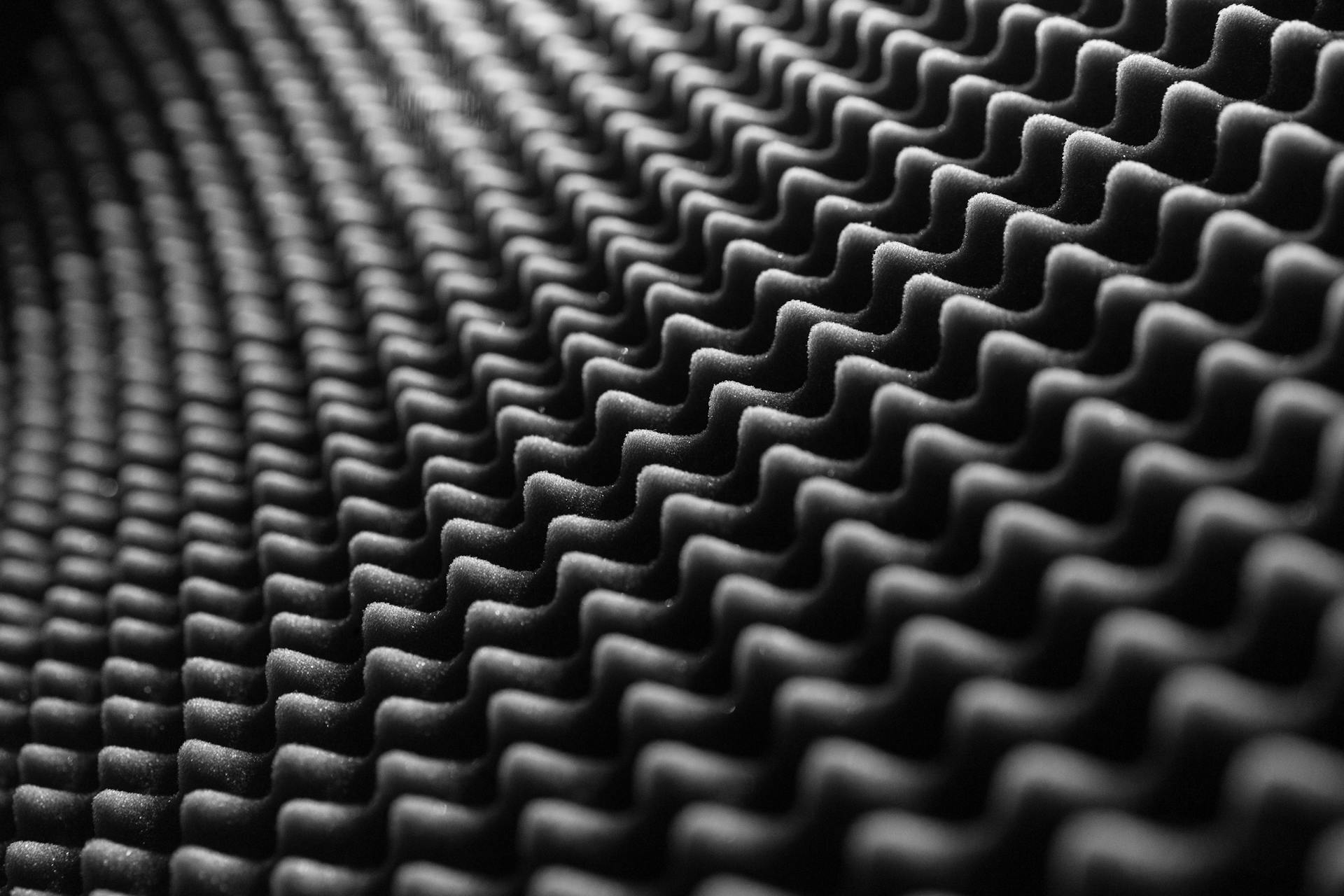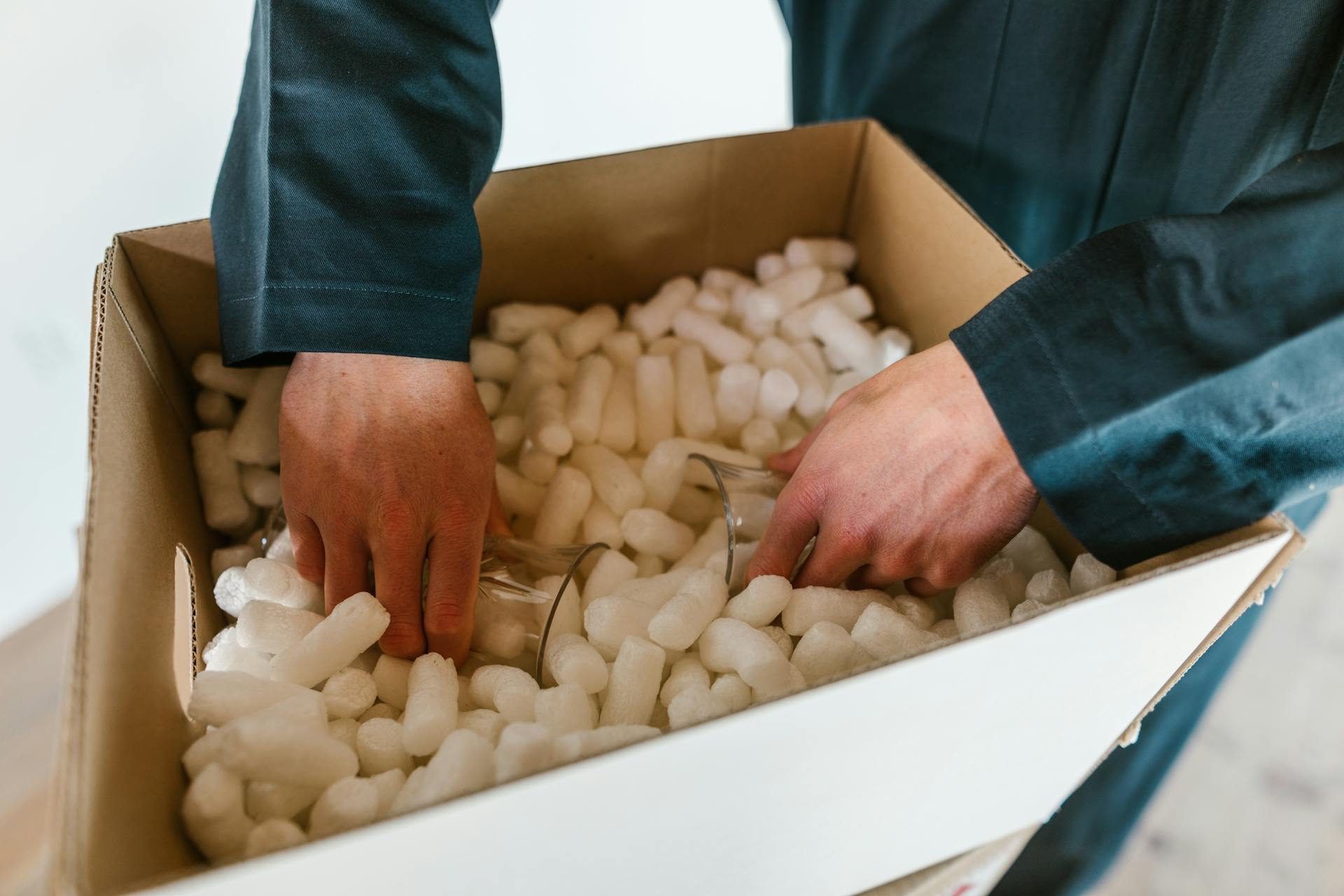
PU foam is a versatile material used in a wide range of applications, from furniture cushions to insulation. It's made from a mixture of polyol and isocyanate.
The production of PU foam involves mixing these two chemicals in a specific ratio, which is crucial to achieving the desired properties. This mixture is then poured into a mold, where it expands and hardens.
PU foam can be produced in various densities, ranging from soft and flexible to hard and rigid. The density of the foam is determined by the amount of blowing agent used in the production process.
Polyurethane foam is a popular choice for insulation due to its ability to provide excellent thermal insulation and soundproofing.
See what others are reading: Spray Foam Insulation Truck
Manufacturing Process
At its core, polyurethane foam manufacturing involves a chemical reaction between isocyanates and polyols, both derived from crude oil or renewable sources.
The chemical reaction generates heat, causing the mixture to expand and create the foam's cellular structure. This process is exothermic, meaning it produces heat.

The production of molded foam involves several key stages, from raw material delivery to the creation of the final product. The process is tightly measured and automated, ensuring consistency and quality.
Polyurethane foam production techniques require precision, control, and adherence to specific parameters to ensure consistent and high-quality foam components.
Industrial Production
Industrial production of polyurethane foam is a massive operation, with an average factory producing around 8,000 tons of foam annually. This is equivalent to nearly 265,000m3 of flexible polyurethane foam, which is like the water contained in 96 Olympic swimming pools.
The raw materials, isocyanates and polyols, are delivered as liquids to onsite storage tanks, where they are pumped to the production area via a closed pipe system. This ensures a controlled environment and precise quantities are predetermined by the exact formulation of the foam to be produced.
The mixing head is where the real production process begins, where isocyanates, polyols, pigments, and other additives are mixed together in specific ratios. This mixture is often referred to as foam formulation.
The entire process is computer-controlled, allowing for precise measurements and automation. The foam formulation is then dispensed onto a moving conveyor production line, where it undergoes a chemical reaction as a controlled expansion process.
The expansion process allows the foam to achieve its desired density, porosity, and physical properties. The foam components are left to cure, which typically takes several hours to ensure the chemical reaction is complete and the foam reaches its full strength and elasticity.
For larger foam blocks, the curing process can last up to 24 hours. During this time, the foam also cools, stabilizing its final structure.
Converting
Converting polyurethane foam is a crucial step in manufacturing medical devices and various products. Polyurethane foam can be processed into a wide range of component parts.
These parts can be created through various processes, including felting, convolution, and laser die cutting. Convolution is a process that involves folding or bending the foam into specific shapes. Laser die cutting is a precise method that allows for intricate designs and shapes.
Polyurethane foam can also be cut into thin layers or smaller pieces using high precision cutting equipment. This process can be done on-site, allowing for quick and efficient production. Blocks of foam up to 120 meters long can be cut into thin layers with extreme precision.
Here are some of the processes used to convert polyurethane foam:
- Felting
- Convolution
- Laser Die Cutting
- Vertical & Horizontal Cutting
- Lamination
- Hot Forming
These processes can extend the life of a device by controlling temperature or vibration, improve end-user comfort through biocompatibility and cushioning, or enhance device performance by protecting sensitive parts.
Production Techniques
Polyurethane foam production involves a series of precise steps that transform raw materials into foam components. The process typically includes mixing, dispensing, expansion, and curing stages.
The mixing stage is where the prepared polyols, isocyanates, blowing agents, catalysts, and additives are combined in specific ratios to create the foam formulation. This mixture is tightly measured and automated to ensure consistency.
In an average factory, around 8,000 tons of foam are produced annually, representing a volume of nearly 265,000m3 of flexible polyurethane foam. This is equivalent to the water contained in 96 Olympic swimming pools.
The production process is computer-controlled, with quantities predetermined by the exact formulation of the foam to be produced. The mixing head is where the real production process begins, with isocyanates, polyols, pigments, and other additives mixed together before being poured onto a rolling conveyor belt.
Small Scale Production

Small Scale Production is a game-changer in the world of foam production. It allows companies to shape foam using moulds, which is a more practical approach.
This method saves on storage space because the foam is formed when it's required. Companies don't have to store large blocks of foam, which can be a logistical nightmare.
Transporting the raw materials, diisocyanates and polyols, is also cheaper than transporting foam blocks. This is a significant cost savings for companies that need to transport these materials regularly.
Here are some key benefits of small scale production:
- Shaping foam using moulds
- Reduced storage space requirements
- Lower transportation costs
By using small scale production techniques, companies can create foam products on-site, reducing the need for storage and transportation. This approach also allows for greater flexibility and customization in the production process.
Variations in Production
Polyurethane foam production techniques offer a range of possibilities for creating different types of foam. The process involves adjusting the formulation and production process to achieve the desired characteristics.
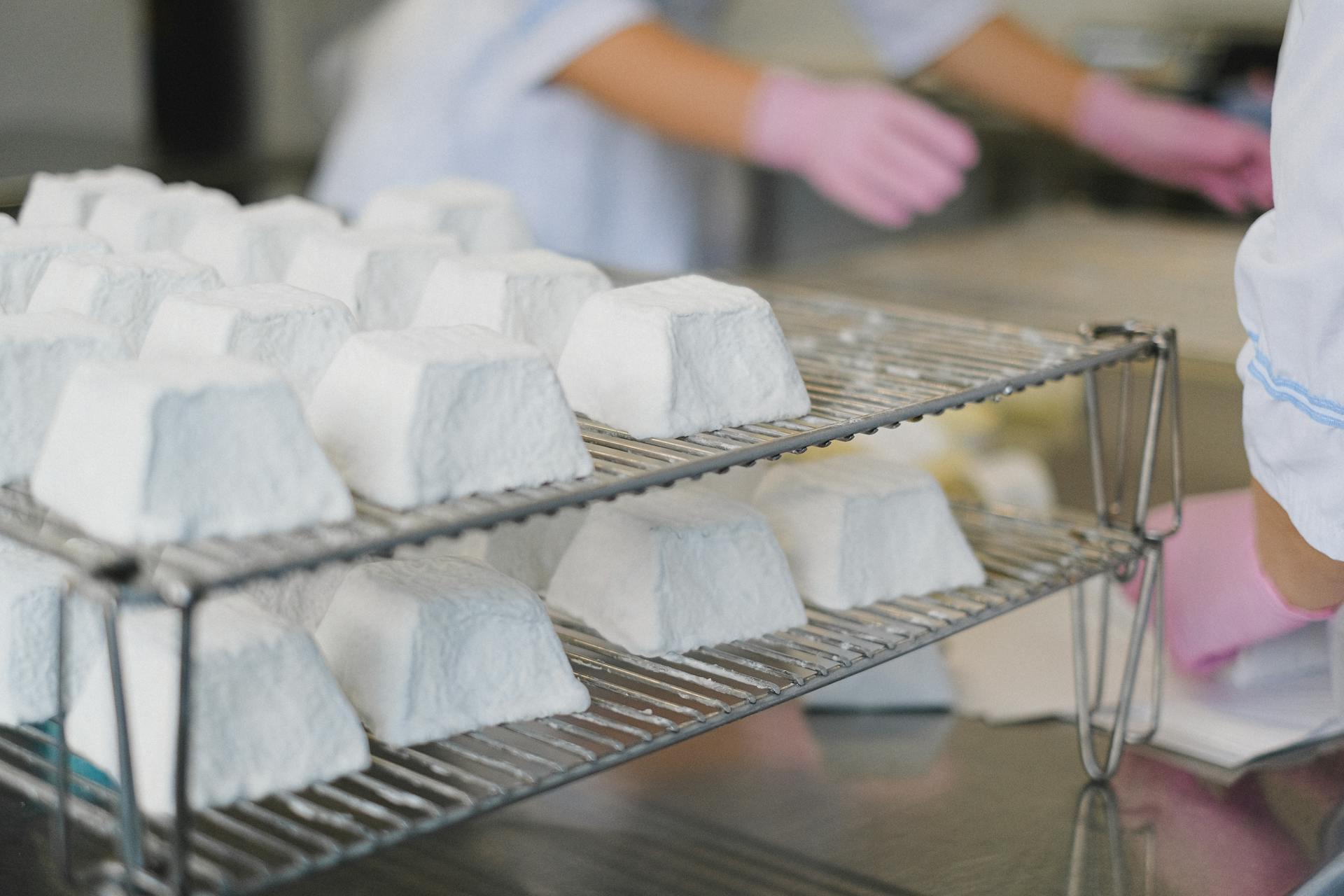
The versatility of polyurethane foam is one of its most remarkable features. By tweaking the formulation and production process, manufacturers can create foam with varying densities, hardness levels, and other characteristics.
Low-density foam, for instance, is used in cushions and mattresses for superior comfort. This type of foam is perfect for applications where a soft, pliable material is needed.
High-density foam, on the other hand, is employed in automotive seating and industrial applications for enhanced durability. Its higher density makes it ideal for heavy-duty use.
Specialty foams can be designed for specific applications, such as filtration, soundproofing, or thermal insulation. These foams are tailored to meet the unique needs of each industry.
Here are some examples of variations in foam production:
The art of foam production lies in adapting the formulation and production process to achieve the desired result. With so many variations to choose from, manufacturers can create foam that meets the specific needs of each industry.
Quality Control & Testing

Throughout the pu foam process, quality control is a top priority. Rigorous quality control measures are implemented to ensure the foam meets industry standards and customer specifications.
Properties such as density, hardness, resilience, and durability are tested to guarantee the foam's performance. The production process is designed to meet these standards, but testing is an essential step to confirm the foam's quality.
Foam density is a critical factor in determining its overall quality. It's tested to ensure it meets the required standards, which can vary depending on the intended use of the foam.
Foam Characteristics
Flexible polyurethane foams can be very firm or very soft, or even visco-elastic. They're widely used as cushioning materials in mattresses, seating, and specialty items.
Indentation load deflection (ILD) is the test method for urethane foam to determine firmness, stiffness, or load-bearing capacity. Flexible foams are also tested for compression sets, density, tensile strength, tear, and elongation.
Flexible slabstock foam is usually low density (1.5-2.5 pcf), while flexible molded foam is medium density (3.0 – 5.0 pcf).
Related reading: Flexible Pu Foam
Flexible

Flexible foam is widely used as a cushioning material in the production of mattresses, seating, and specialty items.
Flexible foam is produced by reacting a polyol blend with a TDI or MDI Isocyanate, and formulators regulate its properties through raw material choices and formulation processes.
Flexible foam can be very firm or very soft, or even visco-elastic, making it a versatile material for various applications.
Indentation load (force) deflection or ILD (IFD) is the test method for urethane foam to determine firmness, stiffness, or load-bearing capacity.
Flexible slabstock foam is produced in a continuous application, where the mixed materials are laid down on a moving substrate and allowed to rise unrestricted, resulting in a low-density foam (1.5-2.5 pcf).
Flexible molded foam is produced using molds that form the foam shape during cure, and it's usually medium density (3.0 – 5.0 pcf).
Integral skin foam is produced in a similar way to FMF, but it forms its own tough outer skin during cure, and it's much denser than the other foam types.
You might enjoy: White Foam Packing Material
Rigid
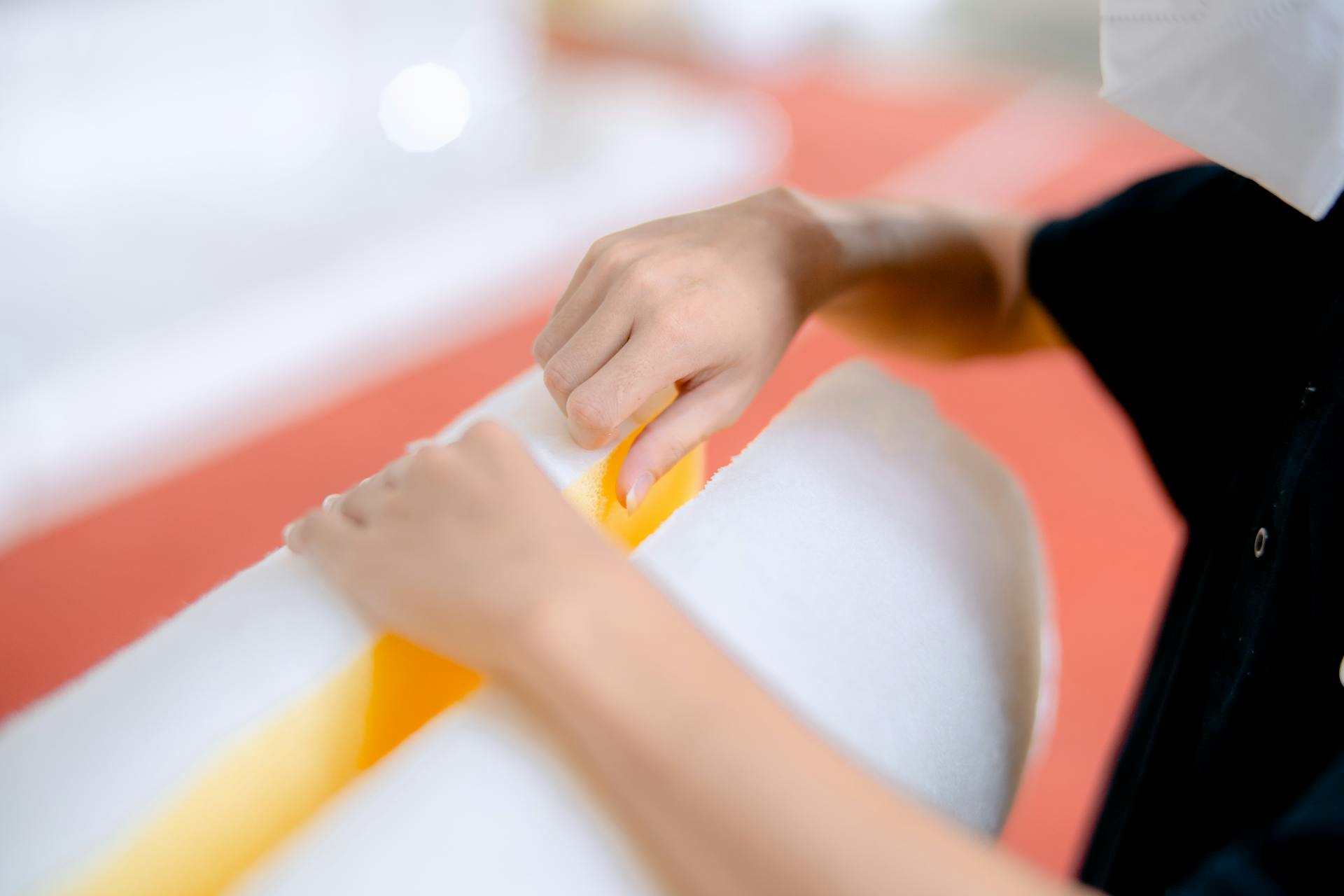
Rigid polyurethane foams are a popular choice for insulation due to their high R-value, which measures heat resistance. They're used in a variety of applications, including insulating doors, buildings, and appliances.
The industry has been shifting towards more eco-friendly alternatives to traditional blowing agents, which can be water, hydrocarbons, or hydrofluorocarbons. This change is driven by new legislative guidelines aimed at reducing environmental impact.
Rigid polyurethane foams have a K-factor, which is the reciprocal of the R-value divided by the thickness. This value is important for installers to consider when choosing the right foam for a project.
Structural rigid polyurethane foams are another application area, where the foam can mimic the characteristics of wood without the drawbacks. They're often used for architectural trim, signage, and chair backs.
Spray foam is a popular application of rigid polyurethane foam, and it's often used to create a sealed building envelope for energy efficiency construction and retrofits. It can also be used for ditch breaks and is even used in packaging foam due to its low density.
Curious to learn more? Check out: Rigid Pu Foam Sheets
Applications and Uses
Polyurethane foam has a wide range of applications, and its versatility is one of its greatest strengths. Flexible polyurethane foams hold the greatest market share currently, due to their wider variety of uses.
Flexible foams are used in a variety of applications, including cushions and mattresses, where they provide superior comfort. They're also used in automotive seating and industrial applications for enhanced durability. High-density foam is employed in these areas for its durability.
Low-density foam is used in cushions and mattresses for superior comfort. High-density foam, on the other hand, is used in automotive seating and industrial applications for its durability. This versatility makes molded foam a popular choice across industries.
Here are some examples of polyurethane foam applications:
- Cushions and mattresses for superior comfort
- Automotive seating and industrial applications for enhanced durability
- Filtration, soundproofing, or thermal insulation
Applications
Flexible polyurethane foams hold the greatest market share currently, due to their wider variety of uses. They are used in a wide range of applications, including furniture, mattresses, and car seats.
One of the key benefits of flexible polyurethane foams is their ability to provide comfort and support. They are often used in cushioning and padding applications.
Rigid polyurethane foams, on the other hand, are used in more industrial applications, such as insulation and construction materials. They are also used in the production of refrigerator and freezer insulation.
Flexible polyurethane foams are also used in the production of carpet underlay and acoustic panels.
Intriguing read: Spray Foam Insulation Shipping Container
Creating Products
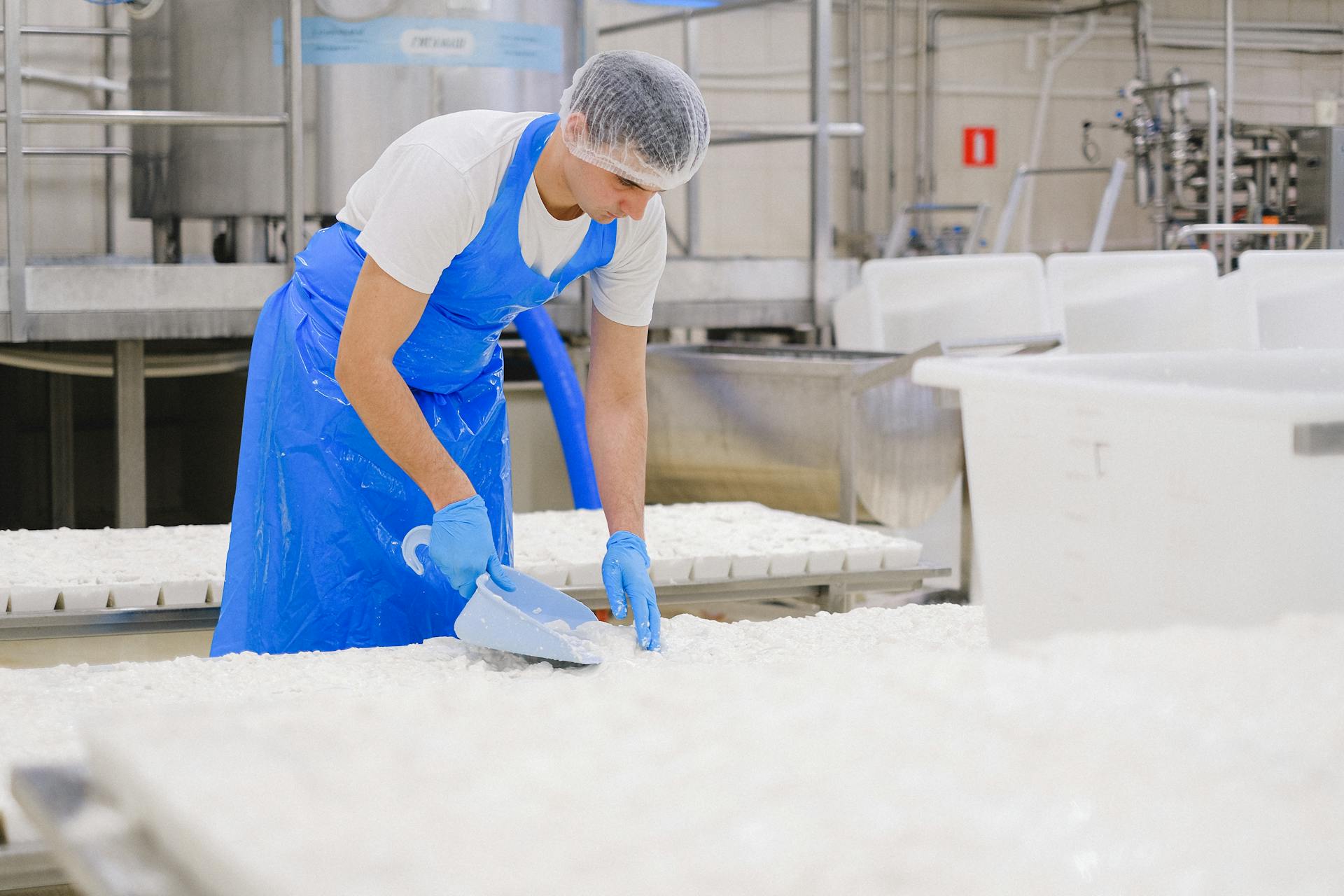
Flexible polyurethane foam is incredibly versatile, allowing it to be transformed into a wide range of products.
One of the most impressive aspects of foam production is its ability to be cut into various shapes and sizes. Blocks of foam can be up to 120 meters long and can be precision-cut into thin layers or smaller pieces.
Manufacturers can also combine foam with other materials to create unique products, such as kitchen sponges. This process is made possible by high-precision cutting equipment that allows for extreme accuracy.
Flexible foam is used in a variety of applications, including cushions and mattresses, which require superior comfort. Its low-density properties make it an ideal choice for these types of products.
Here are some examples of products that can be created from flexible polyurethane foam:
- Kitchen sponges
- Cushions and mattresses
- Furniture components
- Automotive parts
The production process involves mixing the raw materials in a specific formulation, which is then poured onto a rolling conveyor belt where it starts to foam. This foam block can be up to 120 meters long and is cut into sections before being cured and cooled.
Materials and Synthesis
The materials used in the pu foam process are diverse and sourced from various places. The softwood kraft lignin (KL) used in this study was obtained through the Lignoboost process and generously provided by Domtar in the USA.
Polyethylene glycol 400 (PEG 400) and tetrahydrofuran (THF) were purchased from Daejung Science (Korea), while castor oil from SMGREEN (Korea) and silicone oil from Shin-Etsu (Japan) were used. Glycerol and dibutyltin dilaurate (DBTL) were purchased from Sigma-Aldrich (USA).
The synthesis of bio-based PU foams involves physically combining PEG 400 and glycerol (95:5 w:w) and then adding the chosen bio-based material. The resulting bio-based polyol is stirred with an overhead stirrer until homogeneity is achieved.
Materials
The raw materials used in the manufacturing process are stored in large on-site tanks in liquid form.
These substances are transported to the production area through a closed pipe system, minimizing contamination and ensuring precise measurements.
The primary ingredients used in the production area include isocyanates, polyols, pigments, and other additives.

These ingredients are pumped into a mixing head where they are combined into a homogeneous mixture with the help of computer systems controlling the quantities of each ingredient.
The softwood kraft lignin used in this study was obtained through the Lignoboost process and was generously provided by Domtar in the USA.
It was finely powdered using a 500 µm mesh sieve to prepare the sample.
The polymeric Methylene Diphenyl Diisocyanate used was Lupranate M5S, with an NCO group content of 32%, kindly supplied by BASF Korea.
Polyethylene glycol 400 and tetrahydrofuran were purchased from Daejung Science (Korea), and castor oil from SMGREEN (Korea) and silicone oil from Shin-Etsu (Japan) were used.
Glycerol and dibutyltin dilaurate (DBTL) were purchased from Sigma-Aldrich (USA), and an elemental analysis was performed using a US/CHNS-932 (LECO Corp., USA) to determine the carbon, nitrogen, hydrogen, and sulfur content in the softwood kraft lignin.
Synthesis of Bio-Based Foams
Synthesis of bio-based foams is a fascinating process that can be achieved through the use of lignin or castor oil.
Bio-based polyurethane foams can be synthesized using a one-pot method, where a bio-based polyol is prepared by combining PEG 400 and glycerol in a 95:5 weight ratio.
The resulting bio-based polyol is then stirred with an overhead stirrer until homogeneity is achieved, and a catalyst, surfactant, and blowing agent are added to create the formulated polyol.
The formulated polyol is then introduced to the required amount of isocyanate, and the mixture is stirred vigorously at 1500 rpm for 10-30 seconds.
The resulting mixtures are allowed to cure at room temperature with exposure to the open air for a minimum of 24 hours.
Bio-based polyurethane foams can be produced by partially replacing the conventional polyol with lignin at 5 wt%, 10 wt%, 15 wt%, and 20 wt%, resulting in foams with different indexes.
The resulting foams with different indexes are designated as LPU and lpu, respectively, and are compared to control polyurethane foams containing no bio-based materials.
Castor oil can also be used to produce bio-based polyurethane foams, where it replaces the conventional polyol in increments of 10 wt%, eventually reaching a 100 wt% substitution level.
The resulting foams are characterized by their dependence on castor oil amount and are designated as CPU.
Characterization of Bio-Based Materials
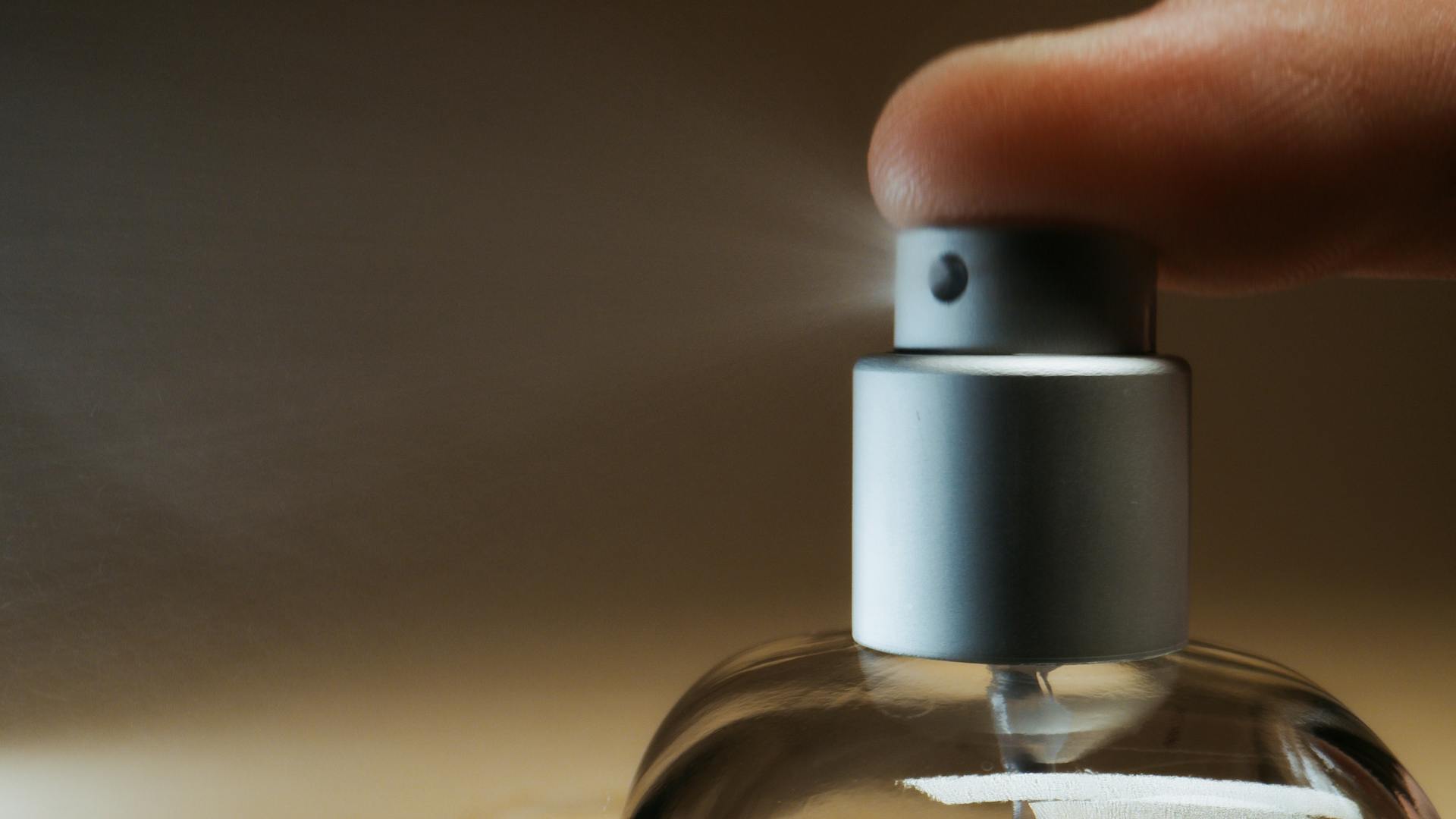
Characterization of Bio-Based Materials is a crucial step in understanding the properties and behavior of these materials.
FT-IR spectra were analyzed to investigate the successful polyaddition reaction between polyol and Isocyanate.
Compressive strength, the stress at 10% deformation, was measured according to ASTM D1621 to determine the mechanical properties of the PU foams. This involved testing each specimen on a universal testing machine at a rate of 2.5 mm/min.
The apparent density of the foams was determined in accordance with ASTM D1622, by measuring the length, width, and depth of each sample using a digital caliper with a precision of 0.01 mm.
The morphology of the foams was observed using a scanning electron microscope (SEM; TM3030 Plus, Hitachi, Japan). This allowed for a detailed examination of the material's structure.
The thermal decomposition behavior of the bio-based PU foams was characterized using a thermogravimetric (TG) analysis on a TGA/DSC3 + (Mettler Toledo, Switzerland). This involved heating the samples at a constant rate of 10 °C/min up to 800 °C in an inert N2 atmosphere.
Readers also liked: Packaging Materials Foam Sheets
Chemical Reaction in Matrix
The chemical reaction within the PU foam matrix is a fascinating process. It involves the formation of urethane linkages through the polyaddition reaction between hydroxyl groups and isocyanate groups.
The FTIR spectra of the LPU and lpu foams were analyzed to investigate the reactions that produced them. This analysis revealed the presence of an N–H bond, C–H stretching of the aliphatic chains, C=O stretching, C–N, and C–O bond peaks in all spectra.
The chemical reaction is exothermic, meaning it generates heat, causing the mixture to expand and create the foam's cellular structure. This reaction is a key factor in the production of molded polyurethane foam.
The N–H bond at 3300 cm, characteristic of PU, became broader as the lignin content increased, suggesting that the isocyanate groups successfully reacted with the hydroxyl groups in both the polyol and lignin. This indicates that the lignin content affects the reactivity of the isocyanate groups.

The residual isocyanate groups (N=C=O) show absorption at 2275 cm, and this peak increased as the lignin content increased in both the LPU and lpu foams. This suggests that the lignin content can affect the reactivity of the isocyanate groups.
The chemical reaction between isocyanates and polyols is the foundation of molded polyurethane foam production. This reaction forms polyurethane foam, which can be tailored with pigments, additives, and blowing agents to achieve desired properties.
Chemistry and Properties
The chemistry behind pu foam manufacturing is fascinating. It's an exothermic reaction between isocyanates and polyols, derived from crude oil, which generates heat and creates the foam's cellular structure.
The reaction between isocyanates and polyols produces polyurethane foam, with the isocyanates and polyols fully reacting by the time the foam is cured and ready for use, making it safe for consumers.
Pigments, additives, and blowing agents can be added to the mixture to tailor the foam's properties, such as density, hardness, and resilience.
Chemistry in Manufacturing
Molded polyurethane foam is the result of a chemical reaction between isocyanates and polyols, both derived from crude oil.
The isocyanates and polyols react to form polyurethane foam, which can be tailored with pigments, additives, and blowing agents to achieve specific properties.
The chemical reaction is exothermic, generating heat that causes the mixture to expand and create the foam's cellular structure.
By the time the foam is cured and ready for use, the isocyanates and polyols have fully reacted, making the material safe for consumers.
The production process involves several stages, from raw material delivery to the creation of the final product, with each stage playing a crucial role in shaping the final product.
The reaction between isocyanates and polyols is the foundation of molded polyurethane foam manufacturing, and understanding this chemistry is key to appreciating the properties of the final product.
For another approach, see: Packing with Foam
Mechanical Properties and Structure
The mechanical properties of a substance are directly related to its structure.
The arrangement of atoms and molecules within a substance determines its strength, flexibility, and resistance to deformation.
For example, the crystal structure of a metal like copper allows it to conduct electricity and withstand high temperatures.
The bonds between copper atoms are strong and rigid, enabling the metal to maintain its shape and resist corrosion.
The structure of a polymer like nylon, on the other hand, is made up of long chains of molecules that can stretch and deform without breaking.
This flexibility makes nylon an ideal material for applications like clothing and carpets.
The mechanical properties of a substance can also be influenced by its crystal structure.
For instance, the hexagonal structure of titanium makes it strong and lightweight, ideal for use in aerospace and medical applications.
Frequently Asked Questions
What are the downsides of polyurethane foam?
Polyurethane foam has several downsides, including high costs and environmental concerns due to its unsustainable production and potential for toxic emissions. Additionally, its disposal can have negative impacts on the environment.
Sources
- https://foamtecmedical.com/polyurethane-foam-manufacturing-and-converting-process/
- https://www.elastas.lt/blog/intro-pu-foam/pu-foam-manufacturing/
- https://www.rojac.com/how-is-polyurethane-foam-produced/
- https://www.gantrade.com/blog/polyurethane-foam-a-versatile-material-with-many-applications
- https://www.nature.com/articles/s41598-024-64318-8
Featured Images: pexels.com
